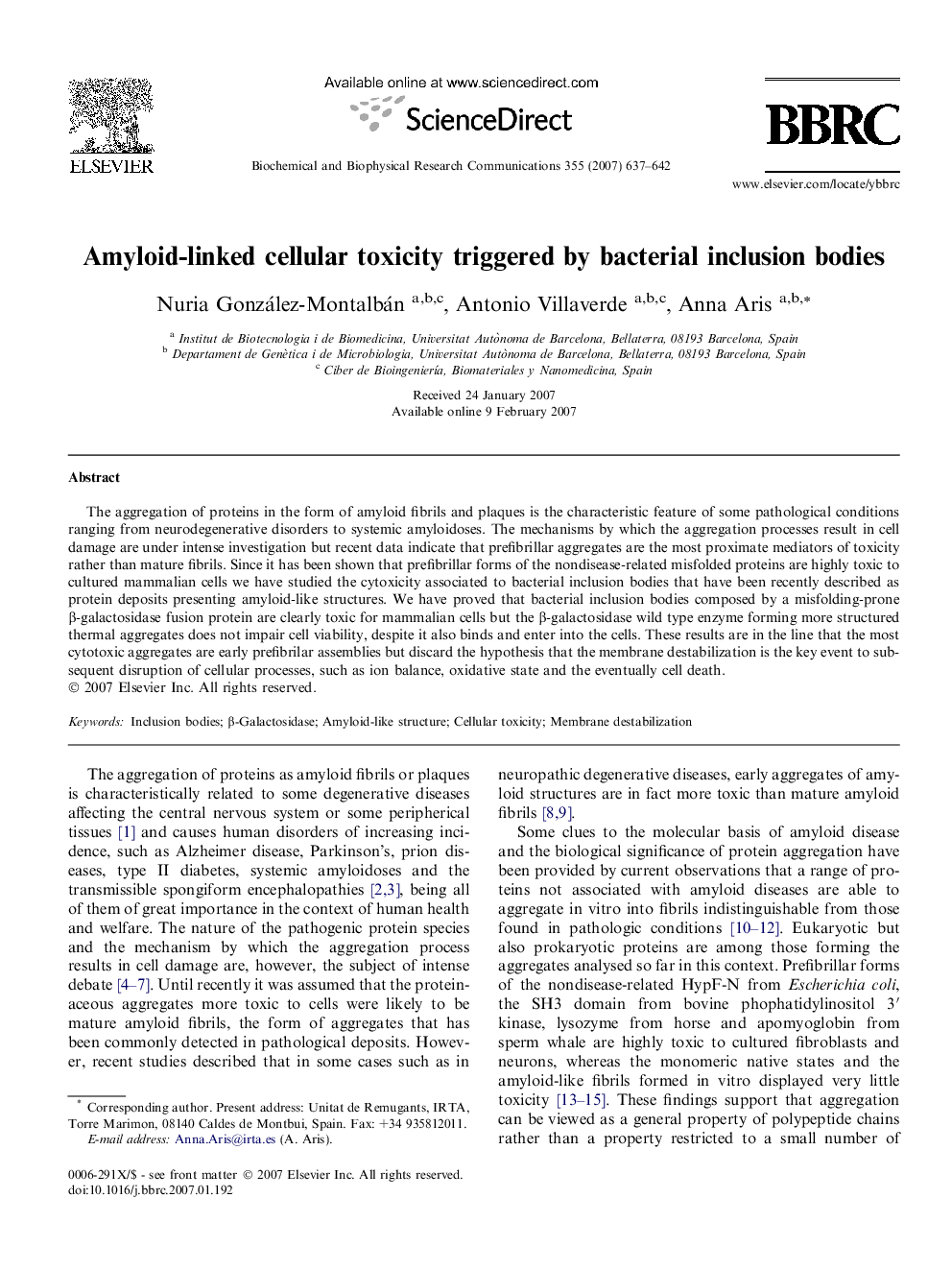| Article ID | Journal | Published Year | Pages | File Type |
|---|---|---|---|---|
| 1938875 | Biochemical and Biophysical Research Communications | 2007 | 6 Pages |
The aggregation of proteins in the form of amyloid fibrils and plaques is the characteristic feature of some pathological conditions ranging from neurodegenerative disorders to systemic amyloidoses. The mechanisms by which the aggregation processes result in cell damage are under intense investigation but recent data indicate that prefibrillar aggregates are the most proximate mediators of toxicity rather than mature fibrils. Since it has been shown that prefibrillar forms of the nondisease-related misfolded proteins are highly toxic to cultured mammalian cells we have studied the cytoxicity associated to bacterial inclusion bodies that have been recently described as protein deposits presenting amyloid-like structures. We have proved that bacterial inclusion bodies composed by a misfolding-prone β-galactosidase fusion protein are clearly toxic for mammalian cells but the β-galactosidase wild type enzyme forming more structured thermal aggregates does not impair cell viability, despite it also binds and enter into the cells. These results are in the line that the most cytotoxic aggregates are early prefibrilar assemblies but discard the hypothesis that the membrane destabilization is the key event to subsequent disruption of cellular processes, such as ion balance, oxidative state and the eventually cell death.
